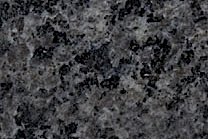| Other Names | Academy Granite, Black Academy, Clovis Black, Academy Grey, California Academy, Academy Granite Black | |
|---|---|---|
| Availability | Inquire | |
| Finishes | Polished, Honed, Sawn, Rockfaced, Sandblasted, Tumbled, Acid Wash, Antique | |
| Country of Origin | United States | |
| Absorption | 0.10-0.15% | |
| Abrasion Resistance | Excellent | |
| Chemical Resistance | Good | |
| Durability | Excellent | |
| Fire Performance | 0 flame spread (per ASTM E 84) | |
| Freeze Thaw Resistance | Good | |
| Hardness | Excellent | |
| Panel Sizes | Up to 4'×8' (1220mm×2440mm) | |
| Staining Resistance | Good | |
| Structural Performance (on Honeycomb) | Excellent |
Academy Granite Panels by StonePly
Origin of black Academy Granite
The black granite known as "Black Academy" comes from the Academy pluton, a 'granite' igneous intrusion at the western edge of the Sierra Nevada mountains. The dark gray to black granite at Academy was formed by magma slowly crystallizing as it cooled below the surface of the Earth. While stone from Academy has long been known as 'black granite' in the commercial stone trade, geologically speaking the black stone from the Academy formation is actually a mafic stone and not a true granite. Academy granite is not a true 'black granite' but a gabbro. Gabbros similar to those from Academy cover about 60% of the earth's surface, mostly under the seafloors. The earth constantly produces new gabbro rocks similar to black Academy granite. These black and grey gabbros form in an ongoing geological recycling process that has replaced the entire ocean floor over the last 180 million years.
Formation of Black Academy Granite
Formed during the Jurassic Age, while dinosaurs roamed the earth, the black to dark gray granites of the Academy formation were once molten magma at the base of an ancient volcano. The magma cooled and crystallized into the black granite (gabbro). Over time, erosion reduced the stone volcano to foothills and only the erosion resistant black granite of the Academy formation remained exposed.
The Academy Granite Name
Academy granite was named for the town of Academy in Fresno County, California where this black granite was first quarried. Granite has been quarried there since the late 1800's and was used even earlier by the Yakut tribe for stone tools. Academy granite was first mined from large black granite surface boulders. Later the Academy quarries were excavated. Quarrying of the black granite increased substantially when the railroad was extended through the towns of Academy and Clovis in the early 1900's and Black Academy granite was able to be shipped nationwide.
Colors of Academy Granite
Academy granites vary from almost black to dark gray. The dark gray to black color of the granite allows for excellent contrast between polished and unpolished faces.
Academy as a Stone Cladding
StonePly bonds polished black granite to aluminum honeycomb panels or other composite backup material to form lightweight, strong and easy to install black granite panels. With up to 60 times the impact resistance of ordinary stone slabs and a weight of less than 4 lbs per square foot, StonePly makes granite cladding faster, easier and stronger.
Billions of years in the making, few materials have lasted as long or will last as long as granite. Outdoors, most polished black granites have an erosion factor of 0.125" per 1,000 years.
The StonePly process combines the incredible beauty and durability of natural black granite with the lightweight and ease of use of aluminum honeycomb. The classic black color and handsome good looks of black granite makes it an excellent choice for anywhere a beautiful, long lasting and natural building material is needed.
Additional Reading
Other than diamonds, rubies, and sapphires, granite is the hardest natural stone. Granite is the preferred stone for exterior cladding as it is known for its strength and resistance to the elements. Unlike marble, granite is a very low maintenance choice for your building exterior; it is extremely resistant to heat, scratching, and stains.
Quarried all over the world, granite comes in a wide variety of colors. Typically you find granite finished with a high polish to show off the beautiful array of colors and natural grain. Granite's appearance is phenomenal for exterior applications or interior accents but can sometimes look too "busy" in confined spaces. To meet the need of current trends, granite can be honed, sandblasted, or have other textures applied to soften its natural tones and provide a very aesthetically pleasing panel.
Granite is not only found in commercial cladding applications but is a favorite for counter tops and flooring as well. The stone is extremely durable and easily maintained and cleaned. Being harder than marble and limestone, granite surpasses other stones in its ability to resist staining and acidic materials.
If your requirements call for a stone that has permanence, enduring texture and color, along with complete freedom from deterioration and maintenance, then granite is an ideal candidate for your project.















